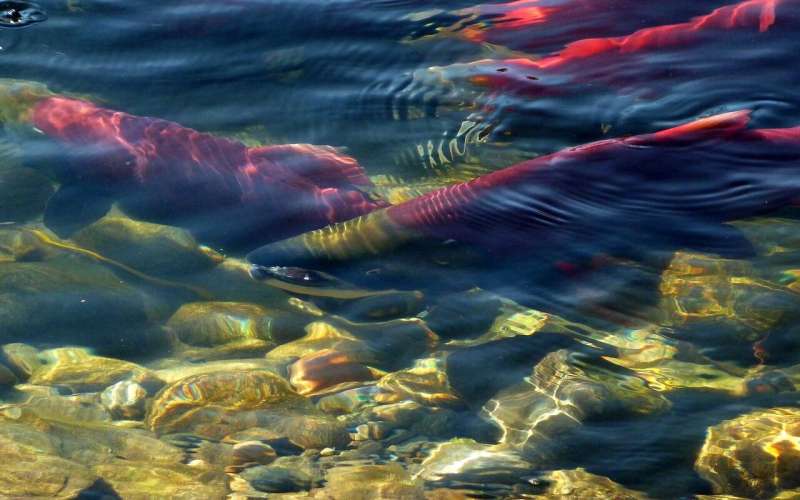Century-old fish scales reveals startling decline in salmon populations

Researchers drawing on 100-year-old sources of salmon data have found that recent returns of wild adult sockeye salmon to the Skeena River—Canada's second largest salmon watershed— are 75 percent lower than during historical times. Research carried out by Simon Fraser University and Fisheries and Oceans Canada and published today in Conservation Letters reveals that wild sockeye populations have declined by as much as 56-99 percent over the last century.
The research team used modern genetic tools to analyze a collection of fish scales that had been in storage for more than 100 years, revealing population patterns of decline that are far greater than previously recognized.
Fisheries scientists began collecting scales from sockeye salmon caught in commercial fisheries in 1912, and the collection continued until 1948.
The analyses reveal century-long declines that are much greater than those based on modern-era abundance data, which only extend back to 1960. Previous analysis suggested that only seven of 13 populations declined over the last five decades. The researchers' new approach shifted baseline data to as far back as 1913.
Michael Price, an SFU Ph.D. candidate and lead study author, says applying modern genetic techniques to ancient fish tissue is an emerging and powerful tool for understanding historical contexts for conservation, such as verifying population extinctions or loss in diversity.
"Historical perspectives for exploited species are critical to understanding the extent of decline in depressed populations," says Price. "Naturally, the better we understand the past, the more informed our decisions towards recovery will be."
The study found that commercial fisheries' historical preference for capturing larger-bodied populations by gill net was the most probable driver of differences in rates of decline among populations over the last century.
"Salmon are fundamental components of ecosystems, and such loss of abundance has reduced nutrient subsidies for wildlife, undermined Indigenous peoples' food security, and eroded the biocomplexity of sockeye throughout the watershed," says SFU professor John Reynolds, a study co-author, and the SFU Tom Buell BC Leadership Chair in Aquatic Conservation.
Price and Reynolds say the research, which expands our understanding of the salmon's production potential, will help inform status evaluations and also discussions for rebuilding depleted populations.
More information: Michael H.H. Price et al. Genetics of century‐old fish scales reveal population patterns of decline, Conservation Letters (2019). DOI: 10.1111/conl.12669
Journal information: Conservation Letters
Provided by Simon Fraser University















